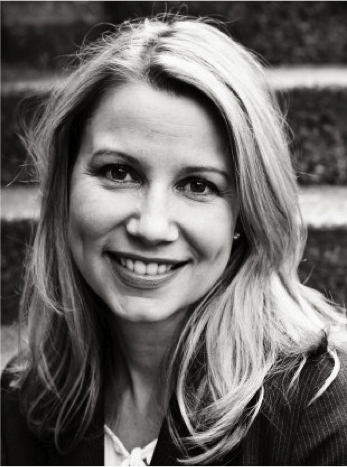The Underbelly of Paris
When you think of Paris, a few things probably spring to mind: sidewalk cafes, the Eiffel Tower, really good croissants. It’s the City of Light, a city of romance and beauty and pleasures…yes?
All that is true, of course. But there’s also a darker side to Paris. Specifically, the side that can only be seen underground. My recently released novel, A Magnificent Crime (Kensington, 2014), second in my Agency of Burglary & Theft series, is largely set in Paris. I’ve been lucky enough to have traveled to Paris several times; my husband and I own a house in Normandy, France, and we go overseas every other year. I love Paris for its literary vibe, its cafe culture, its celebration of all the wonderful things in life: art, wine, food, fashion…but as a crime writer, I’m intrigued by the bloody history of Paris and all its creepy secrets.The Catacombs of Paris, known as France’s Empire of the Dead, are underground cemeteries housing the bones of six million people, exhumed from overcrowded cemeteries in the late 18th century. These bones, stacked and arranged in macabre patterns in the cavern walls, belonged to people who died ages ago. The oldest bones date from the Merovingian era, over 1,200 years ago; the more recent hail from the French Revolution.There’s a long and grim history associated with this underground world. During World War II, members of the French Resistance hid in some areas of the catacombs. In other parts, German soldiers set up underground bunkers. Victor Hugo incorporated the underground Paris into his 1862 novel Les Miserables—they are the passages through which Jean Valjean carries a wounded Marius to safety.
My recently released novel, A Magnificent Crime (Kensington, 2014), second in my Agency of Burglary & Theft series, is largely set in Paris. I’ve been lucky enough to have traveled to Paris several times; my husband and I own a house in Normandy, France, and we go overseas every other year. I love Paris for its literary vibe, its cafe culture, its celebration of all the wonderful things in life: art, wine, food, fashion…but as a crime writer, I’m intrigued by the bloody history of Paris and all its creepy secrets.The Catacombs of Paris, known as France’s Empire of the Dead, are underground cemeteries housing the bones of six million people, exhumed from overcrowded cemeteries in the late 18th century. These bones, stacked and arranged in macabre patterns in the cavern walls, belonged to people who died ages ago. The oldest bones date from the Merovingian era, over 1,200 years ago; the more recent hail from the French Revolution.There’s a long and grim history associated with this underground world. During World War II, members of the French Resistance hid in some areas of the catacombs. In other parts, German soldiers set up underground bunkers. Victor Hugo incorporated the underground Paris into his 1862 novel Les Miserables—they are the passages through which Jean Valjean carries a wounded Marius to safety.
You can visit the catacombs today. You pay 8 euros, walk in through the official museum entrance in the 14th arrondissement, and take a tour. But the fact is, the underground tunnels extend far beyond the official museum. There are hundreds of miles of tunnels—ancient limestone quarries, old sewer networks, canals, crypts, and caverns. But these parts of the labyrinth are off limits to the public. It’s a crime to enter these forbidden sections.
Over the years, rumors and myths about the catacombs have surfaced. A subterranean lake is said to exist beneath the Opera Garnier—a legend that inspired Gaston Leroux while he was writing his novel The Phantom of the Opera. There are accounts of bank robbers tunneling into underground vaults and escaping through the catacombs, but the truth of these heists is less than clear.
Today, there are people, called cataphiles, who venture illegally into the forbidden parts of the catacombs. Theycreate contraband maps of the maze and use the catacombs for secret parties and concerts. They’re not the first to do it; members of the old French nobility allegedly held secret dinner parties in the ghoulish underground chambers of the catacombs.
The legends, the history, the walls paved with bones…it all adds up to a spectacularly creepy setting for a crime novel. Naturally, a crucial scene in my book happens in the catacombs. How could I resist? My protagonist is a criminal—a professional jewel thief—and the story carries themes of superstition, fear, and secrets. Sure, her romantic storyline plays out on the streets and bridges of Paris, but she comes face to face with her fears in the subterranean darkness of the catacombs.
 Biography: Kim Foster is the author of A Beautiful Heist and A Magnificent Crime, the first two books in the Agency of Burglary & Theft series. Kim has a typical background for someone who writes thrillers about thieves and spies and criminals: she has a degree in medicine and is a practicing physician.
Biography: Kim Foster is the author of A Beautiful Heist and A Magnificent Crime, the first two books in the Agency of Burglary & Theft series. Kim has a typical background for someone who writes thrillers about thieves and spies and criminals: she has a degree in medicine and is a practicing physician.
Don’t worry; it doesn’t make much sense to her friends and family, either.
She’s addicted to yoga, loves to travel, and has a clinical weakness for dark chocolate with sea salt. Online, you can find her blogging about her left-brain, right-brain mash-up on www.kimfoster.com. Kim lives with her husband and their two young sons in Victoria, British Columbia, where she’s hard at work on her next book. And drinking a ridiculous amount of coffee.
Photo: Wikimedia commons
